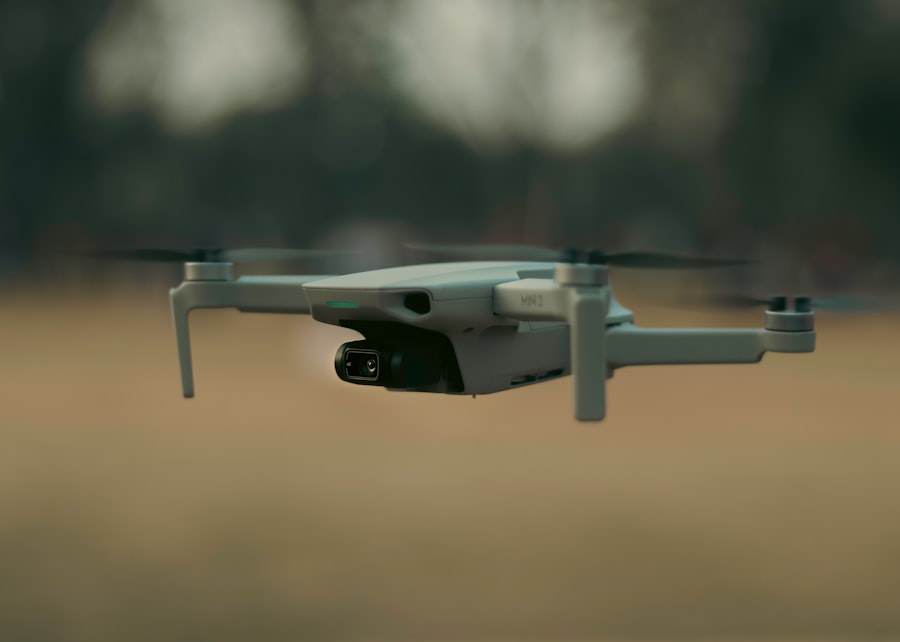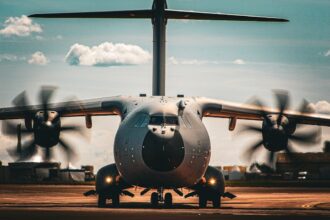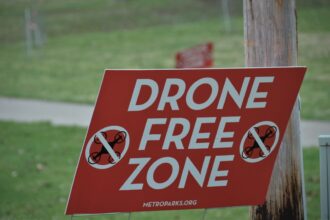Drone technology has rapidly evolved over the past decade, transforming from a niche hobbyist interest into a multifaceted tool with applications across various industries. Initially, drones were primarily associated with military operations, but their versatility has led to widespread adoption in sectors such as agriculture, logistics, surveillance, and entertainment. The increasing accessibility of drone technology has sparked innovation, leading to the development of more sophisticated models equipped with advanced features.
As a result, drones are now seen as essential instruments for enhancing efficiency and productivity in numerous fields. The rise of drone technology has also prompted discussions about regulatory frameworks and ethical considerations. As drones become more prevalent in everyday life, concerns regarding privacy, airspace management, and safety have emerged.
Governments and organizations are working to establish guidelines that ensure the responsible use of drones while fostering innovation. This balance between regulation and technological advancement is crucial for the sustainable growth of the drone industry, as it navigates the complexities of integrating these flying machines into society.
Key Takeaways
- Drone technology has advanced significantly, leading to improved battery life, flight stability, collision avoidance, and integration of artificial intelligence.
- Enhanced battery life and efficiency have allowed drones to stay in the air for longer periods, increasing their operational capabilities.
- Improved flight stability and control have made drones easier to maneuver and operate, leading to more precise and efficient missions.
- Advanced collision avoidance systems have enhanced safety and reduced the risk of accidents during drone operations.
- Integration of artificial intelligence has enabled drones to perform more complex tasks and make autonomous decisions, expanding their range of applications.
Enhanced Battery Life and Efficiency
One of the most significant advancements in drone technology is the improvement in battery life and efficiency. Early models were often limited by short flight times, which restricted their operational capabilities. However, recent developments in battery technology have led to longer-lasting power sources that enable drones to fly for extended periods without needing frequent recharges.
Innovations such as lithium-sulfur batteries and energy-dense fuel cells are paving the way for drones to operate more efficiently, allowing them to cover larger areas and complete more complex tasks. In addition to longer battery life, advancements in energy management systems have also contributed to improved efficiency. Modern drones are equipped with smart algorithms that optimize power consumption based on flight conditions and mission requirements.
This means that drones can adjust their energy usage dynamically, ensuring that they conserve battery life when possible while still delivering high performance. As a result, industries that rely on drones for tasks such as aerial surveying or agricultural monitoring can benefit from increased operational time and reduced downtime.
Improved Flight Stability and Control

Flight stability and control have seen remarkable enhancements in recent years, making drones more reliable and user-friendly. Advanced stabilization technologies, such as GPS-assisted navigation and gyroscopic sensors, have significantly improved a drone’s ability to maintain steady flight even in challenging weather conditions. These innovations allow operators to execute precise maneuvers with confidence, whether they are capturing aerial footage or conducting inspections of infrastructure.
Moreover, the integration of sophisticated flight control systems has made it easier for both novice and experienced pilots to operate drones effectively. Features like altitude hold, return-to-home functions, and waypoint navigation simplify the flying experience, reducing the learning curve for new users. As a result, more individuals and businesses are embracing drone technology, knowing that they can achieve professional-grade results without extensive training or expertise.
Advanced Collision Avoidance Systems
| System Name | Manufacturer | Collision Avoidance Type | Vehicle Compatibility |
|---|---|---|---|
| Pre-Collision System | Toyota | Forward Collision Warning | Various models |
| Collision Mitigation Braking System | Honda | Automatic Emergency Braking | Selected models |
| City Safety | Volvo | City Collision Avoidance | Various models |
As drones become more integrated into urban environments and crowded airspaces, the need for advanced collision avoidance systems has become paramount. These systems utilize a combination of sensors, cameras, and artificial intelligence to detect obstacles in real-time and navigate around them safely. By employing technologies such as LiDAR (Light Detection and Ranging) and computer vision, drones can identify potential hazards and make split-second decisions to avoid collisions.
The implementation of these systems not only enhances safety for the drone itself but also protects people and property on the ground. As regulations surrounding drone operations become stricter, having reliable collision avoidance capabilities will be essential for compliance. Furthermore, these advancements open up new possibilities for drone applications in densely populated areas, such as delivery services or emergency response operations, where safety is a top priority.
Integration of Artificial Intelligence
The integration of artificial intelligence (AI) into drone technology is revolutionizing how these devices operate and interact with their environments. AI algorithms enable drones to process vast amounts of data quickly, allowing them to make informed decisions autonomously. For instance, drones equipped with AI can analyze aerial imagery in real-time to identify crop health issues or detect changes in infrastructure conditions without human intervention.
Additionally, AI enhances the overall user experience by enabling features such as automated flight planning and mission execution. Operators can input specific parameters, and the drone will autonomously navigate to complete its tasks efficiently. This level of automation not only saves time but also reduces the potential for human error, making drone operations more reliable and effective across various applications.
Upgraded Camera and Imaging Technology

The evolution of camera and imaging technology has played a crucial role in expanding the capabilities of drones. High-resolution cameras equipped with advanced sensors allow drones to capture stunning aerial imagery and video footage with remarkable clarity.
Moreover, the integration of gimbal stabilization systems ensures that images remain steady even during turbulent flights. This is particularly important for applications requiring precision, such as surveying or mapping. As camera technology continues to advance, drones are becoming indispensable tools for professionals seeking high-quality visual content or detailed data collection.
Expanded Payload Capacity
The expansion of payload capacity is another significant development in drone technology that has far-reaching implications across various sectors. Modern drones are designed to carry heavier loads than their predecessors, enabling them to transport equipment, supplies, or even medical supplies over considerable distances. This capability is particularly beneficial in industries such as agriculture, where drones can deliver fertilizers or pesticides directly to crops.
In addition to agricultural applications, increased payload capacity allows for more versatile use cases in logistics and delivery services. Companies can utilize drones to transport packages efficiently, reducing delivery times and costs associated with traditional transportation methods. As manufacturers continue to innovate in this area, the potential for drones to serve as reliable delivery vehicles will only grow.
Development of Autonomous Navigation
The development of autonomous navigation systems is transforming how drones operate in complex environments. These systems leverage a combination of GPS data, sensor inputs, and machine learning algorithms to navigate without human intervention. This capability is particularly valuable in scenarios where human pilots may face challenges due to visibility or environmental conditions.
Autonomous navigation allows drones to perform tasks such as mapping large areas or conducting inspections with minimal oversight. For instance, a drone equipped with autonomous navigation can fly predetermined routes to gather data on infrastructure conditions or monitor wildlife populations without requiring constant input from an operator. This level of autonomy not only increases efficiency but also enables organizations to deploy drones in situations where human presence may be impractical or unsafe.
Implementation of 5G Connectivity
The implementation of 5G connectivity is set to revolutionize drone operations by providing faster data transmission speeds and lower latency. With 5G networks becoming increasingly widespread, drones can transmit high-definition video feeds in real-time while receiving commands from operators almost instantaneously. This capability enhances situational awareness for pilots and allows for more responsive control over drone operations.
Furthermore, 5G connectivity enables the possibility of remote piloting over long distances. Operators can control drones from virtually anywhere with a stable internet connection, opening up new opportunities for applications such as remote inspections or surveillance missions in hard-to-reach areas. As 5G technology continues to roll out globally, it will undoubtedly play a pivotal role in shaping the future landscape of drone operations.
Advancements in Drone Swarming Technology
Drone swarming technology represents one of the most exciting frontiers in drone innovation. Inspired by natural phenomena such as flocking birds or schooling fish, swarming technology allows multiple drones to work collaboratively towards a common goal. By utilizing advanced algorithms and communication protocols, swarms can coordinate their movements efficiently while adapting to changing conditions.
This capability has significant implications for various applications, including search-and-rescue missions, environmental monitoring, and agricultural management. For example, a swarm of drones can cover vast areas quickly while collecting data on environmental conditions or locating missing persons more effectively than a single drone could achieve alone. As research continues into optimizing swarm behavior and communication strategies, the potential for collaborative drone operations will expand dramatically.
Future Applications and Implications of Drone Innovations
The future applications of drone innovations are vast and varied, promising transformative impacts across numerous sectors.
Similarly, urban planning could benefit from drone-assisted surveys that provide real-time data on infrastructure development.
However, with these advancements come important implications that must be addressed. Issues related to privacy concerns, airspace regulation, and safety will require careful consideration as drone usage becomes more widespread. Policymakers will need to establish frameworks that balance innovation with public safety while fostering an environment conducive to technological growth.
In conclusion, the rapid evolution of drone technology presents exciting opportunities across various fields while also posing challenges that must be navigated thoughtfully. As advancements continue in battery life, flight stability, AI integration, imaging technology, payload capacity, autonomous navigation, 5G connectivity, swarming capabilities, and more, the potential for drones to reshape industries is immense. The future holds promise for innovative applications that could enhance efficiency and productivity while addressing societal needs responsibly.
As drone technology continues to advance rapidly, 2024 is poised to be a pivotal year for innovations in this field. The integration of artificial intelligence and machine learning is expected to enhance the capabilities of drones, making them more efficient and autonomous. For those interested in exploring the future of drone technology and its implications, a related article can be found on the In The War Room website. This article delves into the latest developments and potential applications of drones in various sectors. To read more about these exciting advancements, visit the article by clicking here.
FAQs
What is drone technology?
Drone technology refers to the development and use of unmanned aerial vehicles (UAVs) for various purposes such as surveillance, photography, delivery, and agriculture.
How is drone technology developing in 2024?
In 2024, drone technology is expected to advance in terms of longer flight times, improved battery life, enhanced autonomous capabilities, and increased payload capacity.
What are the potential applications of drone technology in 2024?
The potential applications of drone technology in 2024 include aerial photography, surveillance and security, delivery of goods and services, agricultural monitoring and spraying, infrastructure inspection, and disaster response.
What are the challenges facing drone technology development in 2024?
Challenges facing drone technology development in 2024 include regulatory hurdles, privacy concerns, air traffic management, security risks, and public acceptance.
How is drone technology impacting various industries in 2024?
In 2024, drone technology is impacting industries such as agriculture, construction, logistics, filmmaking, environmental monitoring, and public safety by providing cost-effective and efficient solutions for various tasks.




